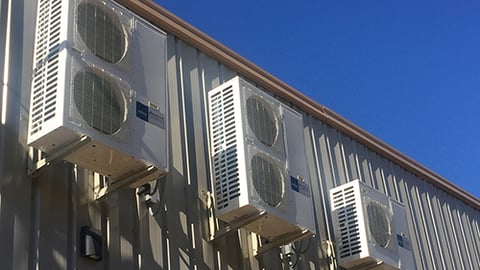Big Benefits From Small Refrigeration IoT Projects
The internet of things (IoT) is now several years into the “hype cycle” of new technology, with initial enthusiasm followed by guarded suspicion. And due to that suspicion, many mainstream grocers have begun to tune out IoT. Sure, it’s nice to remotely monitor and control everything, but does it really make sense to install massive new sets of sensors, wireless networks and control systems?
The answer is yes and no. Yes, there are additional value and savings to be gained by doing more than just alarm monitoring, which most grocers are doing. And, no, you don't have to install new sensors, wireless networks or control systems.
Anywhere from 20 percent to 30 percent of a grocer’s maintenance budget, and as much as 40 percent of their energy budget, can be devoted to refrigeration. When those systems go down, retailers are exposed to huge losses from spoilage and/or disruptive last-minute destocking drills.
PRO TIPS FOR YOUR PILOT
- Design your project for speed. Pilot programs like those described above can be up and running in a matter of weeks. If the programs are properly set up and executed, grocers will see tangible benefits in the results (energy usage, uptime increase, emergencies reduced) within 60 to 90 days.
- Start with few locations. For larger chains, start with deployments in as few as 20 locations. If you can pick 20 stores that all have Emerson controllers, for instance, setup will be a snap. For smaller chains, start with just a handful of stores.
- Begin with common predetermined rules. While there's a wide range of rules that can help, for the sake of a proof of concept, a mere two to three rules can make your pilot setup simple and able to rapidly show benefits. Set up rules for the most common pilot-monitor categories such as:
- Setpoint and schedule anomalies
- Energy usage outside normal parameters
- Enhanced alarm monitoring
- One or two predictive rules
- Tap into historical data If you have access to historical alarm or operational data, the system allows you to run rules retrospectively, thus showing how many times anomalies would have been detected historically.
Many innovative grocery store chains are finding material energy and maintenance savings, higher equipment uptime, and huge reductions in food loss by doing more with the data and systems they already have to optimize their refrigeration for both energy and operations.
By carefully defining a proof-of-concept refrigeration IoT project, grocery chains can quickly prove remarkable ROI. A typical IoT proof-of-concept approach includes the following:
- Establishing remote connectivity to refrigeration and HVAC equipment.
- Agreeing to key performance indicators and success metrics, and executing the proof of concept in up to 20 stores. If success measures are met, then it's easy to scale to the other stores in the operation.
Why iot for refrigeration?
There are a few questions we often get from grocers considering such an approach:
- What gear is required? None. All that's needed is to create a secure connection to the control system managing your refrigeration. In these pilots, you can connect to control systems from vendors such as Emerson, Danfoss, RDM and Tridium.
- How does it help? First, it improves on how alarms are monitored. Sophisticated IoT tools can do a better job of filtering out the “noise,” and then directing alarms that require investigation and action to the right people. These can be your internal technicians, trusted contractor, internal call center, or even the store. Second, sophisticated predictive rules can predict failures from nine to 14 days in advance, with up to 98 percent accuracy. Third, IoT systems are changing how grocers do predictive maintenance. Instead of changing a filter four times a year because the original equipment manufacturer (OEM) said to, your data can tell you exactly when a filter should be changed to reduce maintenance costs.
- What happens differently in the store? Less frustration with nuisance alarms and unneeded work orders, and proactive work being done on assets before they fail to increase uptime and reduce product loss. Therefore, repairs can be conducted more cost-effectively and with less stress during regular business hours. Also, emergency destocking and inventory losses can be almost eliminated.
- Who’s involved? These projects are often handled by an operations or maintenance manager and their team. These people will see real-time dashboards and reports that identify anomalies, and receive alerts when conditions are exceeded or when trendlines go in the wrong direction.
It’s more feasible than ever to create a refrigeration-based IoT pilot project that can demonstrate cost savings and operational improvement. With an evidence-based business case, grocery operators can roll out projects that realize those benefits across the entire chain. And the benefits grow even greater in rollout. One of our grocery clients, having used an IoT monitoring system for five years, still fine-tunes every year, saving an additional few hundred thousand dollars each time.







